When you think of Google Ads targeting, you probably think of keywords. What you probably don’t think of right away is audiences: showing ads to people based on who they are rather than what they’re searching for.
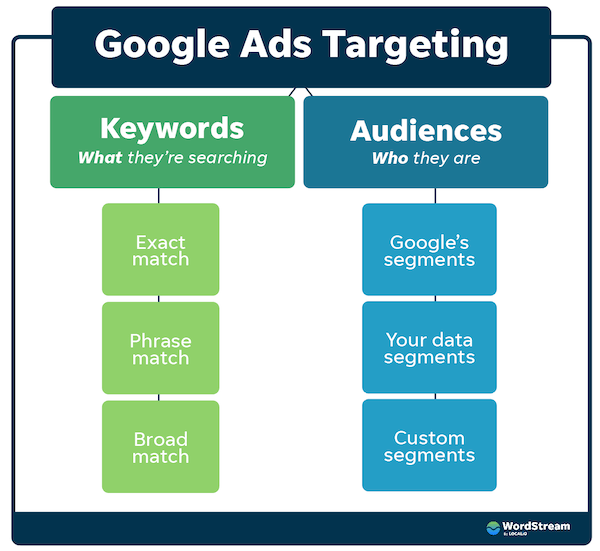
Audiences are one of the most powerful and underutilized targeting strategies in Google Ads, and you can target audiences in Search, Display, Discovery, Video, and Shopping campaigns. (Performance Max campaigns use “audience signals,” which is for another post!)
In this post, I’m going to cover all of the Google Ads audience targeting options you have so you can determine which is right for your next campaign.
Table of contents
The easiest way to understand Google’s audience targeting capabilities is to divide them into four categories:
- Google’s audience segments
Detailed demographics, in-market, affinity, life events. - Your data segments
Remarketing audiences, similar audiences. - Custom segments
Search term-based, website-based, app-based - Other segments
Combined segments, optimized targeting, audience expansion.
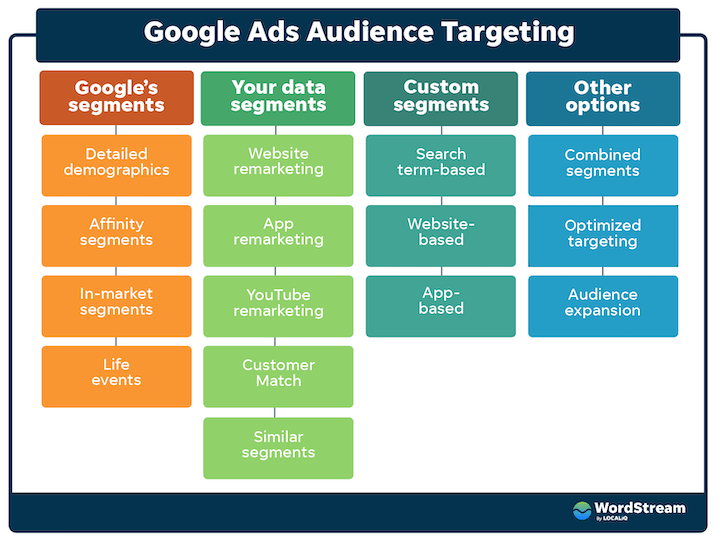
Let’s explore each one in more detail.
1. Google’s audience segments
Google has four categories of “pre-packaged” audiences, which all advertisers have access to. This is the fastest, easiest way to get your feet wet with audiences.
Detailed demographic targeting
This type of audience targeting goes beyond the basic age/gender/parental status information to provide deeper targeting options based on life and career stages.
Examples:
- Marital status: Married
- Homeownership status: Renters
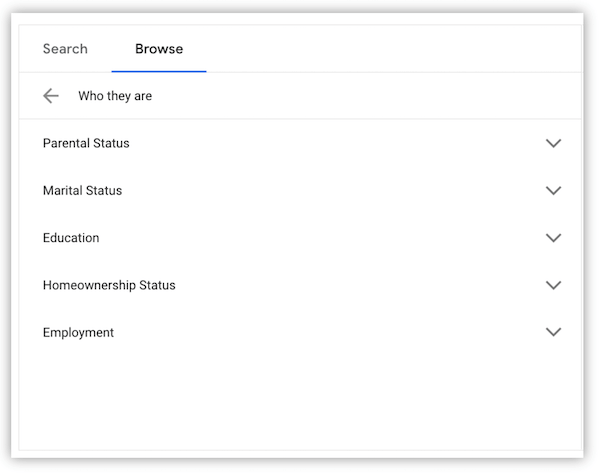
Affinity segment targeting
This refers to reaching people who have similar interests, hobbies, and habits. Generally, these are stable over time, and great for awareness marketing.
Examples:
- Beauty mavens
- Luxury travelers
In-market segment targeting
In-market segments are people who are getting ready to purchase specific products or services. People are moved into and out of these categories based on their current shopping behavior, making them great for high-intent prospecting campaigns.
Examples:
- SEO & SEM services
- Trips to Singapore
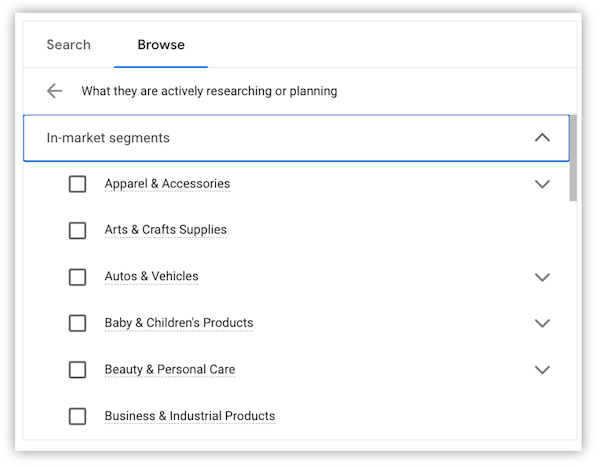
Life event targeting
As you can expect, this is to target people who are currently going through a significant life transition, such as graduating, getting married, or moving.
Examples:
- Getting married soon
- Recently added dog to household
2. Your data segments
Google has moved away from using the term “remarketing” and renamed this section “your data.” The euphemism is still accurate. Google remarketing (also known as retargeting) is when you show your Google ads to people who already have a relationship with your business.
This is one of the most common and generally most profitable paid ads tactics.
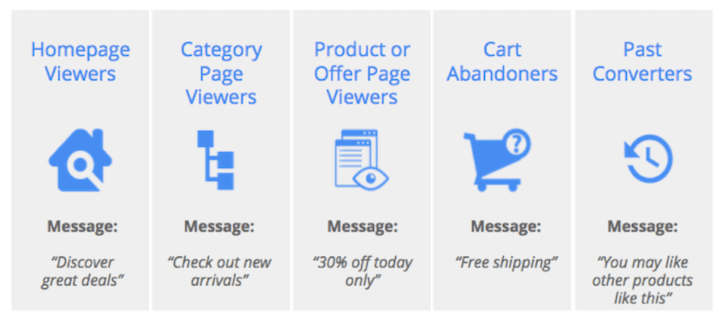
Remarketing audiences
There are four types of remarketing audiences available in Google Ads:
- Website: a list of users who’ve interacted with your website
- App: a list of users who’ve interacted with your app
- YouTube: a list of users who’ve interacted with your YouTube channel/content
- Customer Match: a list of users who have given you their personal data (email, phone number, etc.), which you upload into Google Ads
For more help in this realm, Navah Hopkins provides some great remarketing campaign tips here.
Similar segment audiences
Also known as lookalikes or similar audiences, these are lists of users that exhibit similar online behavior to those on your remarketing lists.
For example, the users on a Similar segment generated from your Most Profitable Customers list would be people who are new to your business, and exhibit similar behavior and habits to your best customers, therefore are more likely to be interested in becoming your customers.
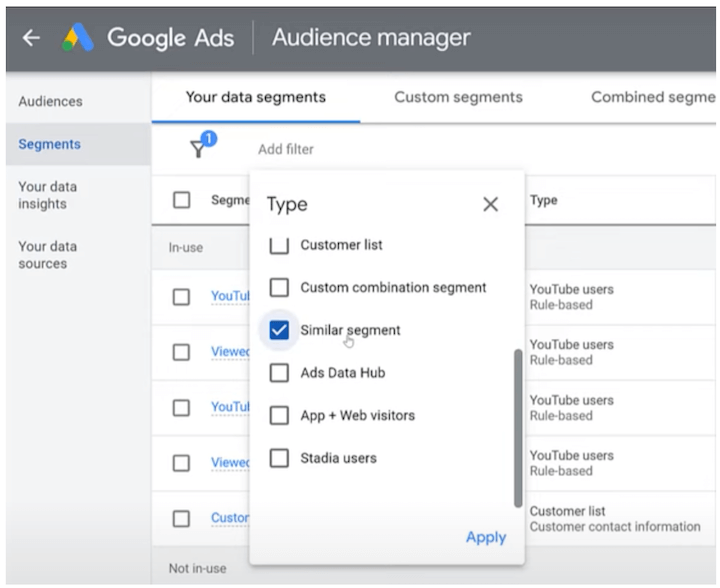
Google Ads will automatically generate similar segments in your account when there is enough data on your remarketing list(s) to do so. This is a very powerful customer acquisition tactic.
3. Google Ads custom segments
Google offers a third kind of unique audience targeting called custom segments. This is a really fascinating intersection between Google’s data and your business that most people don’t think about. It lets you take other pieces of information that Google knows about people, but slices and dice sit in a way that’s unique to your business.
Within Google Ads custom audience targeting, you have three different options for audience creation:
- The interests and products/services people are searching for
- The types of websites people browse
- The types of apps people use
Note that you can’t add custom segments to your Search or Shopping campaigns, but they are a great audience targeting option for Display, Discovery, and Video campaigns.
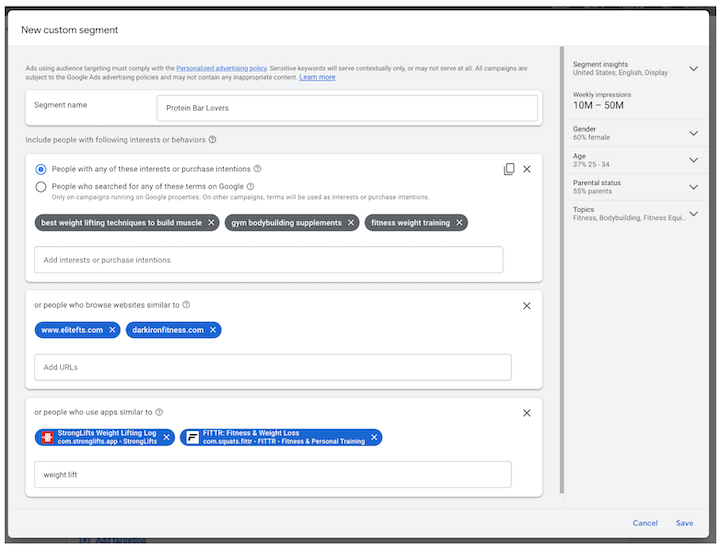
For example, when I launched my Google Ads course, I created a custom segment of people who have searched for queries like google ads course, learn google ads, and google ads certification.
Then, I created a second custom segment of people who have apps like Google Ads or Meta Ads on their phone. I added both custom segments to a Video campaign, to reach new audiences who are likely to be interested in Google Ads training.
4. More Google Ads audience targeting
But wait, there’s more!
In addition to Google’s audience segments, your data segments, and custom segments, you have even more audience targeting capabilities in Google Ads.
Combined segment targeting
Google Ads combined segments lets you put together an audience of people who match multiple audience targeting requirements. Plus, a combined segment can contain a custom segment. The possibilities are endless!
For example, you can create a combined segment of people who are:
- In-market for athletic shoes OR in-market for activewear
- AND luxury shoppers
- but NOT on my customer list OR website remarketing list
Optimized targeting
Finally, optimized targeting is how you can leverage Google’s machine learning to find new audiences who are likely to help you meet your business goals.
When you create a Discovery, Display, or YouTube campaign, you will automatically be opted into optimized targeting at the ad group level. The purpose of optimized targeting is to let the algorithms do what they do best, and find pockets of opportunity to get you a better CPA, ROAS, or whatever metric your bid strategy is optimized for (ergo, optimized targeting).
Note that optimized targeting is used in Display, Discovery and conversion-focused Video campaigns, while its “cousin,” audience expansion, is used in reach-focused Video campaigns.
Google Ads audience targeting cheat sheet
And that’s it! Here is a summary of all of the Google Ads audience targeting options we covered in this post.

Google’s audience segments
- Detailed demographics
- Affinity segments
- In-market segments
- Life events
Your data segments
- Website remarketing
- App remarketing
- YouTube remarketing
- Customer Match
- Similar segments
Custom segments
- Search term-based
- Website-based
- App-based
Other
- Combined segments
- Optimized targeting
- Audience expansion

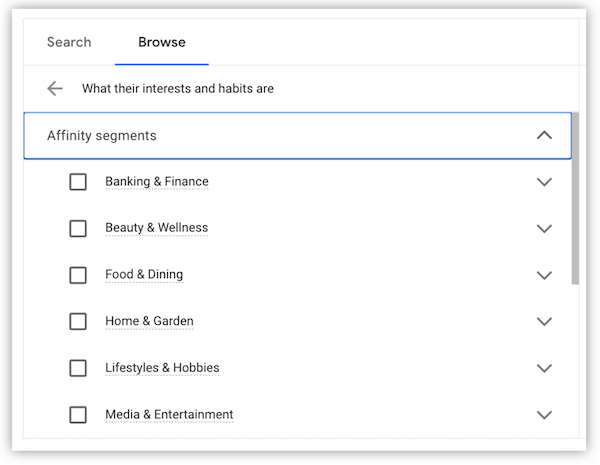

0 Comments